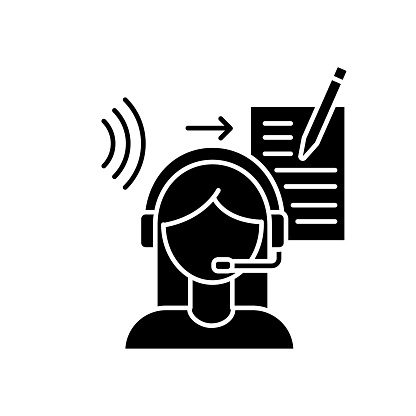With advances in artificial intelligence Audio over the past few years, people are increasingly relying on a technology called automatic speech recognition (ASR) to help with transcription. ASR technologies can easily convert human speech to text , and their market is already growing rapidly.
How AI Improves Transcription Efficiency
Human transcription has existed in some form for hundreds, if not thousands of years. More recently, it has gotten a boost from artificial intelligence. Transcriptions are themselves textual versions of audio content; they enable readers to understand what was said or happened over a period of time without having to listen to the recording again. Transcription is critical to record keeping, knowledge sharing and providing greater accessibility.
Manual vs AI-Driven Transcription
We’re all familiar with the manual approach to audio transcription: In a face-to-face situation, humans record the words or what happened in a given meeting or event as quickly as possible. Remotely, people can listen to audio files from events and have them transcribed as they listen. They may then review their initial notes and clean up as needed. This approach can achieve a high level of accuracy, especially in the latter case, but is often time-consuming and difficult for the recorder.
AI-driven transcription aims to reduce the time investment for this task by processing the initial transcription in real-time. The best approach would be for a human to verify the document after the fact, fixing any errors or misinterpretations by the AI. Ideally, this person should have expertise in the subject matter (law, medicine, etc.) so that they can understand the appropriate terminology to use. The reason for the need for human experts is that while AI-driven audio transcription has made great strides in recent years, it still faces many challenges in terms of accuracy.
Practical Applications of Audio Transcription
Accurate transcription is critical to many industries, while others are only just beginning to adopt transcription practices. A number of startups have recently joined the space and offer AI-driven transcription technology to facilitate faster adoption. Anyway, here are some apps that use transcription:
1. Medicine: Physicians and nurses must keep extensive and detailed records of patient interactions, treatment plans, prescriptions, and more. With dictation services, they can verbally detail this information and have it automatically transcribed for greater efficiency. The medical field relies on precise transcriptions to ensure they treat patients correctly. For example, if a transcription incorrectly records the number of times a patient needs to take a prescription, it could have disastrous consequences for their health.
2. Social Media: You may have noticed that some videos have subtitling services. It’s a new feature that automatically captions people as they speak using AI. While it might not always be completely accurate, it helps provide greater accessibility and usability to users.
3. Technology: Smartphones have had text-to-text capabilities for some time. As the name suggests, it lets you text someone by voice dictation, rather than typing the message manually.
4. Legal: In law, accurate documentation of court proceedings is critical to a case because accuracy can affect the outcome of a case. Historical documents are also important for future case study or reference.
5. Police work: Audio transcription has many applications in police work, and there may be many more to come. It can be used to transcribe investigative interviews, evidence recordings, emergency hotline calls, interactions recorded by body cameras, and more. Just like the law, the accuracy of these transcriptions can have a major impact on court cases and people’s lives.
Transcription is a cornerstone of many industries; it will be interesting to see which of these spaces rapidly adopt AI-driven transcription services. For industries new to transcription, they may wish to benefit from the enhanced customer experience and usability that AI-driven transcription can provide.
Overcoming Transcriptional Challenges to Improve Inclusion

AI still faces many hurdles in achieving accurate transcription. Much of this has to do with the fact that human speech varies from speaker to speaker. For an AI to properly capture a speaker’s dialogue, it needs to be familiar with the speaker’s language, dialect, accent, tone, pitch, and volume. This is a lot of factors, so you can imagine the amount of training data required to teach these models.
Companies building audio transcription services must take an inclusive approach when building training datasets. This means taking into account all potential end users of the product and making sure their voice changes are reflected in the training data. Without a full representation, the technology will struggle to recognize some speakers’ words, creating a frustrating experience for the speaker. In the meantime, the best option for companies remains to incorporate human reviewers into the process.
What can we do for you
We provide secure, confidential transcription services to clients in the public and private sectors. We provide a variety of services to meet our clients’ needs, including:
Audio transcription: We use machine learning-powered tools to create your meeting minutes, which are then reviewed by highly skilled transcriptionists.
Note-taking and meeting minutes: Our professional note-takers will attend your meetings and provide an unbiased and accurate summary of what was discussed.
Recording: Our recording technicians capture high-quality audio on-site using professional recording equipment.
